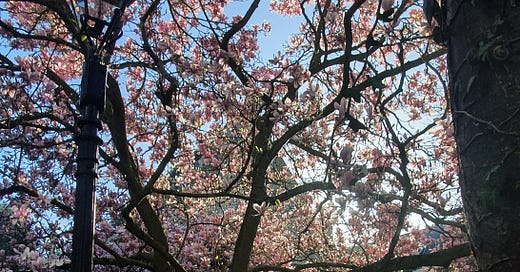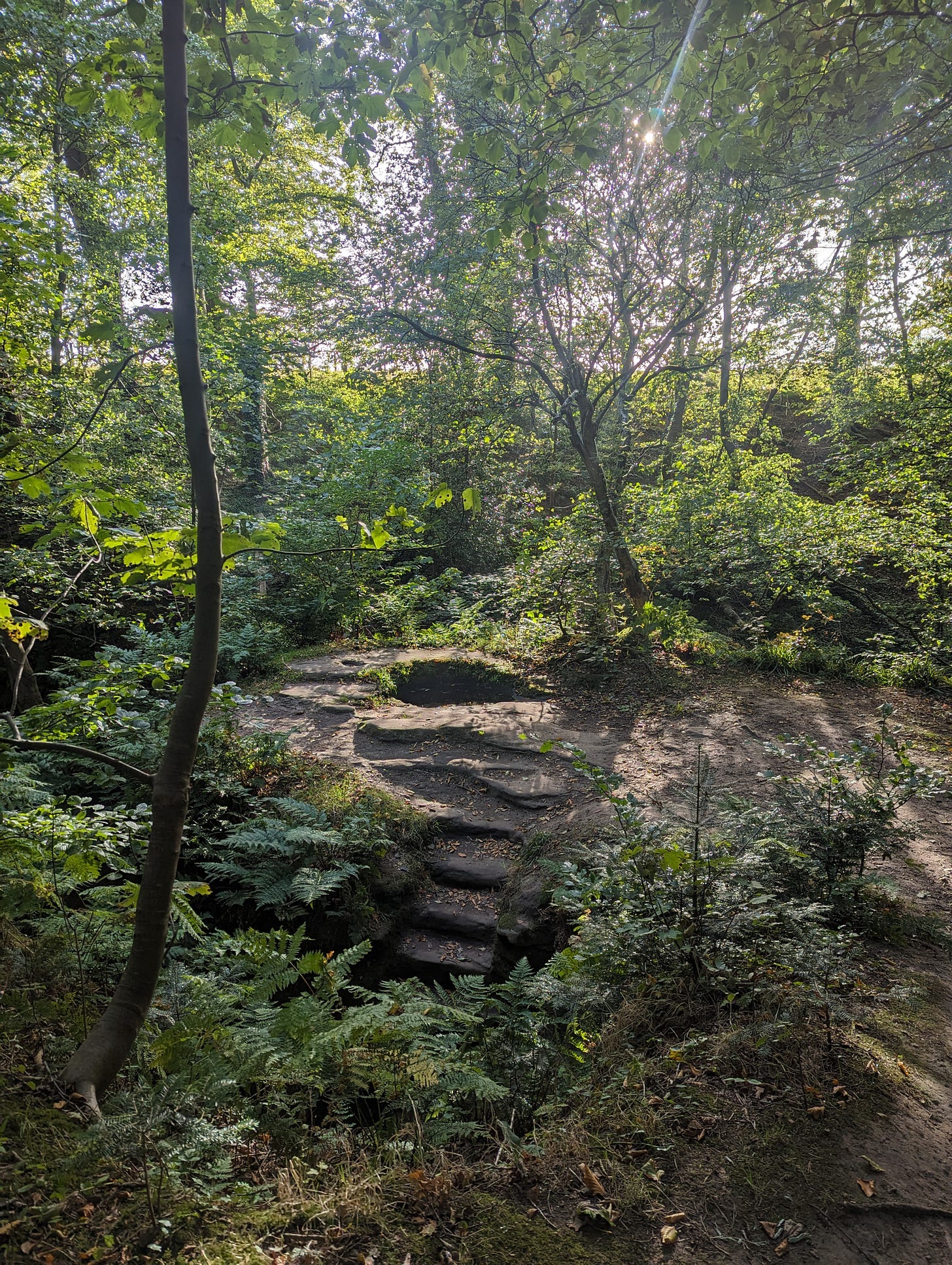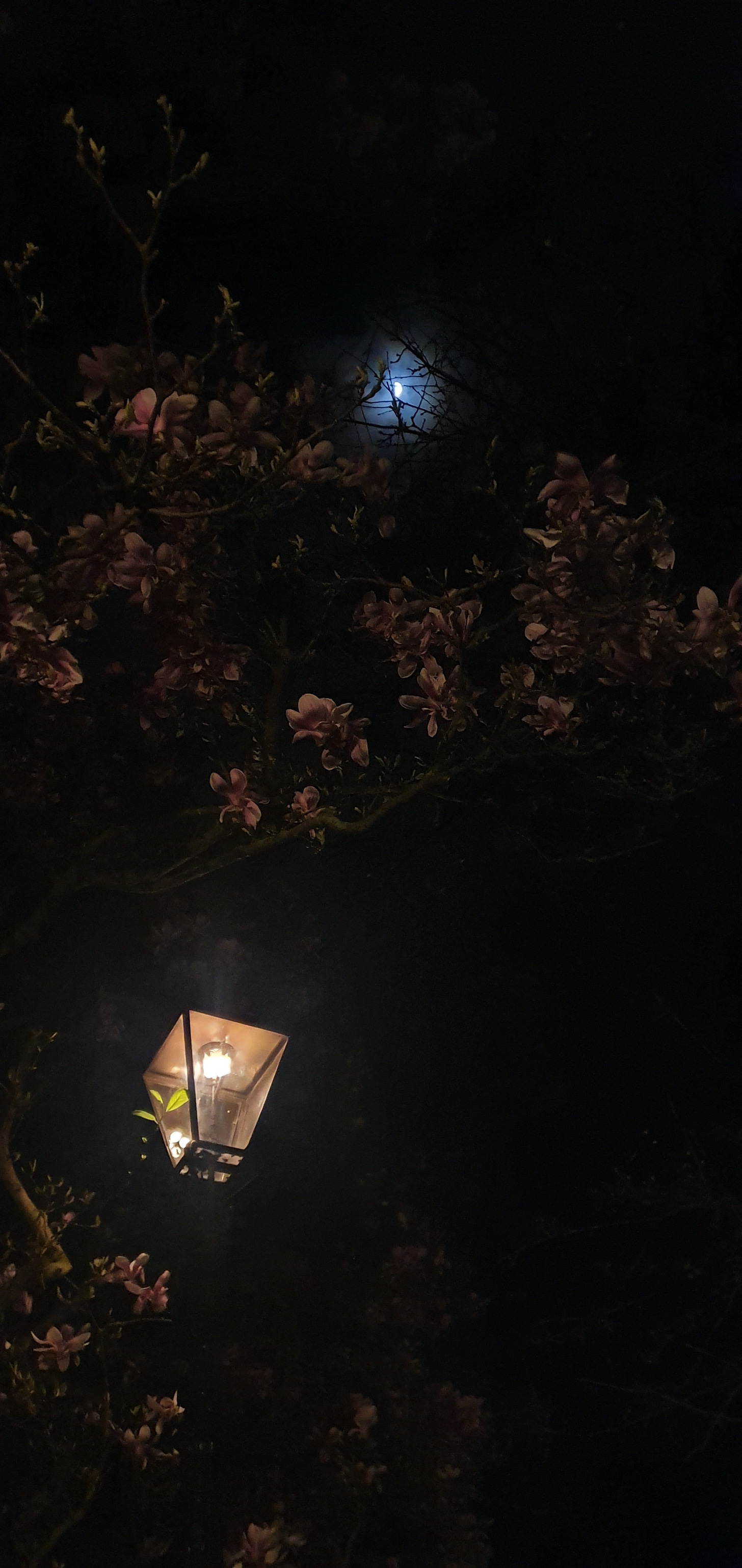The Trees are Well, All is Right in the World: J. R. R. Tolkien’s "The Lord of the Rings"
Faerie, Fantasy, and Sci-Fi, Oh My—Part 3
In part three of this series, I continue to explore what may be learned about human-arboreal (tree/forest) relations from literature. In the first post, I introduced the interdisciplinary framework for this series, and in the second I explored what might be seen through the genre of fairy tales. Now I continue with a consideration of the genre of fantasy, specifically through the primary work of J. R. R. Tolkien, The Lord of the Rings. Trees and forests in Tolkien’s work have been extensively researched, and, as such, I spend less time parsing it out and give here a shorter write-up with notes on relevance for the main question of this series. For those curious about the research, see the bibliography as well as the “Further Reading” list at the end of this essay for a few ideas on places to begin.
Summary Review
J. R. R. Tolkien (1892-1973) has been called the father of fantasy for his genre-defining work, The Lord of the Rings (originally published 1954-1955). In contrast to fairy tales, which appear to occur in our world as it were but in a one dimensional reality, where there is no mark between the natural and supernatural (as we might say, cf. Lock 2010:153, in which she quotes Luthi’s traits of the folktale), the world of fantasy is wholly other and it operates according to its own internal norms. As such it is a type of our world. Further, while fairy tales often are metaphorical and characters personify abstractions, fantastical beings may reflect all the complexities of human nature (Hanks 2012:43).
Forests and trees in The Lord of the Rings are central throughout and too numerous to recount in full. Trees are place markers (Tolkien 1976:320); their condition serves as an indicator of a society’s morality (ibid., 278); and they exhibit agency in shaping place (ibid., 125). Forests are the location for testing (ibid., 376); the means by which characters are brought to the appointed place (ibid., 519); and places of rest and restoration (ibid., 677). The forests and trees are signs of healthy, wholesome societies and individuals in Tolkien’s world and their destruction is a mark of the Enemy and his works. Ultimately, for example, when the hobbits return to the Shire and confront the evil of Saruman’s treachery in their own land, the deepest grief is the knowledge that it would take generations for the glory of the Shire to be restored: the trees (ibid., 1060).
In Tolkien’s world trees take on agency of their own (ibid., 129) and strive to enforce their own ethics upon the creatures who would limit their forests, for example, as Old Man Willow holds sway over the reaches of the Old Forest (ibid., 145) and Fangorn is a type of caretaker in his Forest. The trees hold a power and presence over other beings that cannot be ignored (ibid., 125), and shape experience with a deliberate awareness (ibid., 370).
Analysis & Insights
The forests and trees of Tolkien’s The Lord of the Rings contain similar characteristics to those in MacDonald’s fairy tales, but as features in fantasy they are also distinct. The power of fantasy, according to Tolkien, is to create “images…of things not in the primary world” and to make the secondary world believable internally (Hanks 2012:39), in order to provide “the healing gifts of recovery, escape and consolation” (Finseth 1997:42). The forests in Tolkien, like in fairy tale, are more than mere trees, and thus can be more than they are.
In Tolkien’s world, we see the Ents as the embodiment of the forest, as it were, who are not anthropocentric1 in their culture; when they act, in their time and way, their power is far beyond the Men of Middle-Earth and humanity of our world (in its own right, separated from tools) (cf. Finseth 1997:41, Tolkien 1976:590ff). Their ethical orientation too are tree-oriented, as Treebeard proclaims Isengard will become a forest filled with trees, old and young (Tolkien 1976:610), creating a place that restores what was lost.
The forest in fantasy is also inside and outside, secure and treacherous, powerful and independent—in itself, not in relation to humanity. It is an image of what, in our world, is often ignorant or dismissive of, yet, drawing on the traditions that shape our understanding of forests—historical, biblical, and philosophical—Tolkien’s trees contain their own unique culture, agency, place, and ethics. In the history of Middle Earth, the arboreal traditions parallel ours, though more explicitly in that human-arboreal relations actively reclaim what was lost, when the evil of Mordor is overthrown in part by the actions of the trees themselves. The world of Men must take note and treat with them on agreed upon terms, or, it might be implied, pay a similar price.
The arboreal-human dynamics are much more evident in Middle Earth than in fairy land, for here the various races of Tolkien’s world interact with each other as distinct entities, not abstractions. While trees are interpreted by readers as revered symbols or signs in Middle Earth, as the White Tree of Gondor exemplifies (Tolkien 1976:783, 1008), and this has often been noted as a reflection of the author’s environmental stance (Danielson 2021), according to the internal nature of Middle Earth’s reality, it does not seem possible to reduce the trees and forests to mere signs or symbols, nor a black-and-white morality marker.2 For Tolkien, however, there seemed to be an almost intuitive grasp of, one, the necessary inter-dependenteness of humanity and the arboreal, wherein to destroy, mistreat, or overlook trees will eventually result in the implosion of the society and nature; the decay of Mirkwood may be an example of this. And two, Tolkien notes in a letter that “forests are represented as awakening to consciousness of themselves” thus Lothlorian is beautiful because it is loved and the Old Forest is hostile because it has been mistreated (Tolkien 1972). This forest consciousness rejects the reduction to a morality symbolisation since the forests themselves are not passive objects reflecting the active humanoid societies of Middle Earth; they are shaped by how those communities treat them, and vice versa. When one prospers so does the other; when they mistreat each other, both are lessened, at the least. Forests reflect moral values, but that is a single element of their essence in the broader world.3
The fantasy arboreal world of Middle Earth may present a more holistic (as opposed to fairy tales) picture of human-arboreal relational reality, for, while the various species utilise wood for construction and fires, a healthy society engages not in destruction for its own sake and treats with each community for a mutual flourishing (e.g. Tolkien 1976:1016). This tenant may be central to imaging Tolkien’s perception of the relational dynamics among the species of Middle Earth, a principle that aligns with anthropology beyond the human’s focus on recognising the mutual “becoming with” of human and non-human (Haraway 2008:244; Kirksey Helmreich 2010:546; Ingold 2013:20-21). Anthropology, overall, seeks to “educate” the human perception of the world, and the nexus, or contact zone, in which given species interact is where the research focuses to see how each species “becomes” itself in and through the relations with others (Ingold 2011:229). Tolkien provides an example of what this kind of mutual becoming with looks like on the societal level.
Tolkien’s arboreal creatures have a unique mythology which goes directly back to the creation of their world. The peoples of Middle Earth seem to be aware of this (the Elves at least are, and the other races have heard of the stories) and perhaps the imago arboris—images of the Two Trees of Valinor—inspires the same type of wild dynamics we find in our world around the treatment of those we believe, according to a (statistically) dominant Creation myth, who are imago Dei: human-on-human relations. This does not elevate trees to the level of deity, in Tolkien’s world, but aligns them with that which is the essence of light, life, and goodness. The correlation to our word is too obvious to dismiss, particularly in light of environmental work which has shown this seemingly inherent nature, but fashioning a vision for this is an ongoing challenge. These types of essential relations may be worked out most clearly in the fantasy genre, but from there perhaps we can draw on the patterns of those worlds to fashion a vision for ours.
Further Reading
Bergman, Frank. 1977. “The Roots of Tolkien's Tree: The Influence of George MacDonald and German Romanticism Upon Tolkien's Essay `On Fairy-Stories'.”Mosaic: An Interdisciplinary Critical Journal, Winter 1977, Vol. 10, No. 2, Faerie, Fantasy and Pseudo-mediaevalia in Twentieth-Century Literature (Winter 1977), pp. 5-14. https://www.jstor.org/stable/24780280.
Cunningham, Michael. 2006. “In the Shadow of the Tree: A study of the motif of the White Tree in the context ofJRR Tolkien's Middle-earth.” Mallorn: The Journal of the Tolkien Society, No. 44 (August 2006), pp. 3-8.
See the journal site for additional articles on Tolkien and related work: https://journals.tolkiensociety.org/mallorn/issue/view/45.Conrad-O’Briain, Helen and Gerard Hynes (eds). 2013. Tolkien: The Forest and the City. Dublin: Four Courts Press.
This is a remarkable collection of essays covering a diverse range of topics related to Tolkien’s trees/forests and cities, ranging from Middle Earth etiquette and the relation of hobbit architecture to the Arts and Crafts movement, to the creation of speculative cities and cultural materialism.Ordway, Holly. 2023. Tolkien’s Faith: A Spiritual Biography. Elk Grove Village, Il: Word on Fire Academic.
This biography of Tolkien focuses on his faith, but in her tracing of this aspect of Tolkien’s life, the place of trees and forests also comes through.
Bibliography
Danielson, S. 2021. ‘To trees all Men are Orcs’: The environmental ethic of J.R.R. Tolkien’s ‘The New Shadow’. Tolkien Studies 18, 179–194.
Finseth, C. R. 1997. Tolkien’s Trees. Mallorn: The Journal of the Tolkien Society 35, 37–44.
Hanks, Jr., T. 2012. Tolkien’s ‘Leaf by Niggle’: A blossom on the tree of tales. Journal of Inklings Studies 2, 23–48.
Haraway, D. J. 2016. The companion species manifesto: dogs, people, and significant otherness. In Manifestly Haraway(eds) D. J. Haraway & C. Wolfe, 91–108. University of Minnesota Press (available on-line: https://www.jstor.org/stable/10.5749/j.ctt1b7x5f6.5).
Ingold, T. 2011. Being alive: essays on movement, knowledge, and description. Oxon: Routledge.
––––––– 2013. Anthropology beyond humanity. Suomen Antropologi: Journal of the Finnish Anthropological Society 38, 5–23
Kirksey, S. E. & S. Helmreich 2010. The emergence of multispecies ethnography. Cultural Anthropology 25, 545–576.
Lock, S. 2010. Narrative strategy: The role of woods and forests in George MacDonald’s fairy tales. American, British and Canadian Studies 15, 148–161.
Tolkien, J. R. R. June 30, 1972. [339. Letter to the Editor of the Daily Telegraph, 1972] Retrieved from, The Letters of J. R. R. Tolkien, 1981, H. Carpenter (ed). New York City, NY: HarperCollins
––––––– 1976. The Lord of the Rings. London: George Allen & Unwin, Ltd.
1 Much may be said about the gender dynamics as reflected in the role of the Entwives, among other female characters in Tolkien’s work, but that is an essay unto itself, of which Potter and Byrne have considered in their article, “Why do trees need herding? J.R.R. Tolkien’s mastery of trees in The Lord of the Rings (2022). For this essay, I am focused on the internal structure of the world, and not seeking to evaluate it by our cultural values (feminist or otherwise).
2 That would be more reminiscent of how science fiction utilises symbols and metaphors to create a social commentary.
3 An interesting thought arose in the course of this review of tress and forests in Middle Eart: could the trees (also) be sacramental in substance? A sign points to something, a symbol represents something, but a sacrament is both sign, symbol, and simultaneously the real presence of that to which it points and represents. In Tolkien’s Middle Earth the Two Trees of Valinor exist in the land of the Valar, where the first People, the Elves, were created and originally dwelt. If sacramental, then the essence of the Valar, light, life and being, and all that is good in the world, is embodied in the trees. It may follow that the sacramental act is found in the intersection of forest-other (elves/dwarves/men/etc.), and the nature of that relation determines the outcome.








